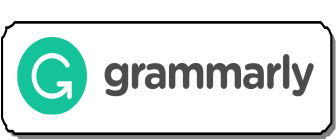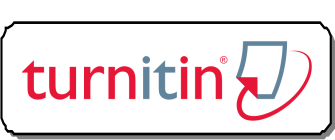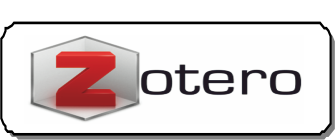Developing An E-Learning Platform For Islamic Education That Incorporates The Principles Of Religious Moderation Within School Settings
Abstract
The establishment of online Islamic religious e-learning with a focus on religious moderation in educational institutions is an endeavor aimed at broadening the availability of well-rounded and balanced Islamic religious education through digital learning platforms. This research aimed to create an e-learning system that specifically emphasizes the principles of religious moderation within schools. The research adopted a developmental approach (R&D), by utilizing the ADDIE model (Analysis, Design, Development, Implementation, and Evaluation). After conducting an analysis, the e-learning system was designed and developed using cutting-edge technology that enables active student interaction and engagement. Subsequently, the e-learning system was introduced as a pilot project in the school setting. Students and teachers actively participated in utilizing this system to access Islamic religious content that was customized to their individual needs and comprehension level. Throughout the implementation phase, an assessment was conducted to evaluate the effectiveness of the e-learning system in enhancing comprehension of the Islamic faith and fostering a moderate religious mindset. The findings of this research demonstrated a significant demand for Islamic religious education focused on religious moderation. There was a pressing need for the development of efficient learning tools to facilitate successful comprehension of Islamic Studies materials, particularly among junior high school students. This conclusion is supported by the analysis of data using the Wilcoxon test, which yielded a t-value of -4.878 and a p-value of 0.00, indicating statistical significance (p < 0.05).
References
Abudinata. Metodologi Studi Islam. Jakarta: Rajawali Press, 2014.
Af’idah, Af’idah, Miftahuddin Miftahuddin, and Taufiqur Rohman. “Development of Learning Module Reading Al-Qur’an Writing in Basic State School Rogomulyo 02 Semarang.” SYAMIL: Jurnal Pendidikan Agama Islam (Journal of Islamic Education) 8, no. 2 (November 29, 2020): 99–117. https://doi.org/10.21093/sy.v8i2.2257.
Anam, Saeful, and Arina Almasal Firdaus. “Penggunaan Learning Resources Dalam Pembelajaran Agama Islam.” JALIE: Journal of Applied Linguistics and Islamic Education 04 (2019): 53–70.
Ayu, Mutiara. “Online Learning: Leading E-Learning at Higher Education.” Arab World English Journal (AWEJ) Special Issue on CALL Number 4 (2018).
Bellefeuille, G, R.R Martin, and M.P. Buck. “From Pedagogy to Technagogy in Social Work Education: A Constructivist Approach to Instructional Design in an Online, Competency-Based Child Welfare Practice Course.,” 2005.
Cahyadi, Rahmat Arofah Hari. “Pengembangan Bahan Ajar Berbasis Addie Model.” Halaqa: Islamic Education Journal 3, no. 1 (June 5, 2019): 35–42. https://doi.org/10.21070/halaqa.v3i1.2124.
Efendi, M. Arif. “Ini Langkah-Langkah Kemenag Dalam Penguatan Moderasi Beragama.” Moderasi Beragama, Jakarya, 2021.
Garad, Askar, Abdullah M. Al-Ansi, and Ika Nurul Qamari. “The Role Of E-Learning Infrastructure And Cognitive Competence In Distance Learning Effectiveness During The Covid-19 Pandemic.” Jurnal Cakrawala Pendidikan 40, no. 1 (February 15, 2021): 81–91. https://doi.org/10.21831/cp.v40i1.33474.
Herlinawati, Herlinawati. “The Integration of Religious Moderation Values in Islamic Religious Education Learning at Public Universities (Efforts and Constraints in the Implementation of Anti-Radicalism Education).” SYAMIL: Jurnal Pendidikan Agama Islam (Journal of Islamic Education) 8, no. 2 (December 25, 2020): 157–77. https://doi.org/10.21093/sy.v8i2.2643.
Huda, M, A Maseleno, P Atmotiyoso, M Siregar, R Ahmad, K. A Jasmi, and N. H. Nor Muhamad. “Big Data Emerging Technology: Insights into Innovative Environment for Online Learning Resources.” International Journal of Emerging Technologies in Learning (IJET) 13, no. 1 (2018): 23-36.
Kementerian Agama RI. Moderasi Beragama. Jakarta: Badan Litbang dan Diklat Kementerian Agama RI, 2019.
Maryani, Y. “Aplikasi E-Learning Sebagai Model Pembelajaran Berbasis Teknologi Informasi Di Jurusan Kesehatan Gigi Poltekkes Kemenkes Pontianak.” Jurnal Vokasi 9, no. 1 (2013): 27–39.
Munir. Pembelajaran Jarak Jauh Berbasis Teknologi Informasi Dan Komunikasi. Bandung: Alfabeta, 2009.
Ngabekti, S, A.P.B Prasetyo, R.D Hardianti., and J. Teampangpong. “The Development of STEM Mobile Learning Package Ecosystem.” Jurnal Pendidikan IPA Indonesia 8, no. 1 (2019): 81–88.
Rosenberg, M. J. E-Learning: Strategies for Delivering Knowledge in the Digital Age. New York: Mc Graw-Hill, 2001.
Setyosari, Punaji. Metode Penelitian Pendidikan Dan Pengembangan. Keempat. Jakarta: Kencana, 2016.
Sutaphan, Sukanya, and Chokchai Yuenyong. “Enhancing Grade Eight Students’ Creative Thinking in the Water Stem Education Learning Unit.” Jurnal Cakrawala Pendidikan 42, no. 1 (January 31, 2023): 120–35. https://doi.org/10.21831/cp.v42i1.36621.
Tambunan, Hamonangan. “Pengembangan Pembelajaran Berbasis Website Dalam Matakuliah Pengaturan Mesin Listrik.” Jurnal Cakrawala Pendidikan 5, no. 1 (May 6, 2013). https://doi.org/10.21831/cp.v5i1.1260.
Urdan, T. A, and C. C. Weggen. “Corporate E-Learning: Exploring a New Frontier.,” 2000. http://www.spectrainteractive.com/pdfs/CorporateELearingHam recht.pdf.
Copyright (c) 2023 Saeful Anam, Nur Mubin

This work is licensed under a Creative Commons Attribution-ShareAlike 4.0 International License.
Please find the rights and licenses in SYAMIL Jurnal Pendidikan Agama Islam (Journal of Islamic Education). By submitting the article/manuscript of the article, the author(s) agree with this policy. No specific document sign-off is required.
1. License
The non-commercial use of the article will be governed by the Creative Commons Attribution license as currently displayed on Creative Commons Attribution-ShareAlike 4.0 International License.
2. Author(s)' Warranties
The author warrants that the article is original, written by stated author(s), has not been published before, contains no unlawful statements, does not infringe the rights of others, is subject to copyright that is vested exclusively in the author and free of any third party rights, and that any necessary written permissions to quote from other sources have been obtained by the author(s).
3. User/Public Rights
SYAMIL spirit is to disseminate articles published are as free as possible. Under the Creative Commons license, SYAMIL permits users to copy, distribute, display, and perform the work for non-commercial purposes only. Users will also need to attribute authors and Register on distributing works in the journal and other media of publications. Unless otherwise stated, the authors are public entities as soon as their articles got published.
4. Rights of Authors
Authors retain all their rights to the published works, such as (but not limited to) the following rights;
Copyright and other proprietary rights relating to the article, such as patent rights,
The right to use the substance of the article in own future works, including lectures and books,
The right to reproduce the article for own purposes,
The right to self-archive the article (please read out deposit policy),
The right to enter into separate, additional contractual arrangements for the non-exclusive distribution of the article's published version (e.g., post it to an institutional repository or publish it in a book), with an acknowledgment of its initial publication in this journal (SYAMIL Jurnal Pendidikan Agama Islam (Journal of Islamic Education)).
5. Co-Authorship
If the article was jointly prepared by more than one author, any authors submitting the manuscript warrants that he/she has been authorized by all co-authors to be agreed on this copyright and license notice (agreement) on their behalf, and agrees to inform his/her co-authors of the terms of this policy. SYAMIL will not be held liable for anything that may arise due to the author(s) internal dispute. SYAMIL will only communicate with the corresponding author.
6. Royalties
Being an open accessed journal and disseminating articles for free under the Creative Commons license term mentioned, author(s) aware that SYAMIL entitles the author(s) to no royalties or other fees.
7. Miscellaneous
SYAMIL will publish the article (or have it published) in the journal if the article’s editorial process is successfully completed. SYAMIL editors may modify the article to a style of punctuation, spelling, capitalization, referencing and usage that deems appropriate. The author acknowledges that the article may be published so that it will be publicly accessible and such access will be free of charge for the readers as mentioned in point 3.












